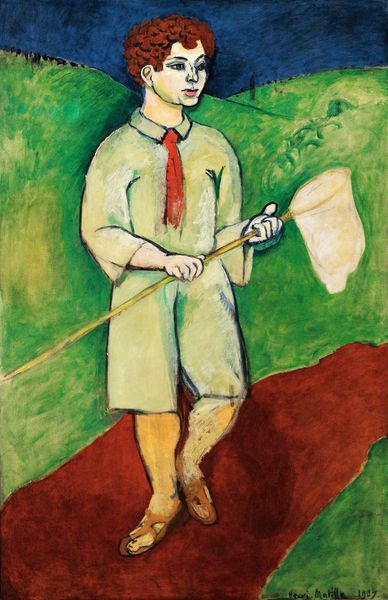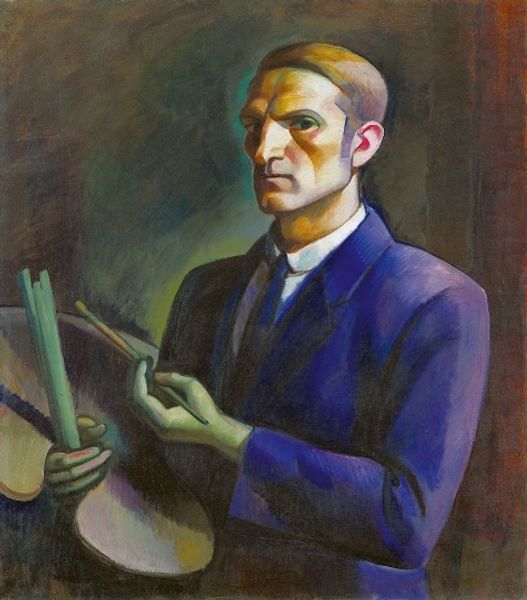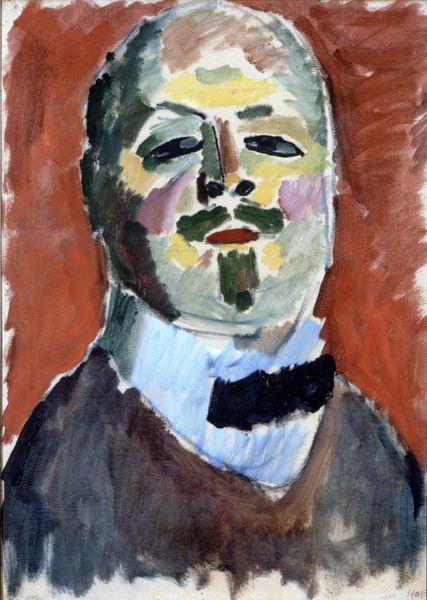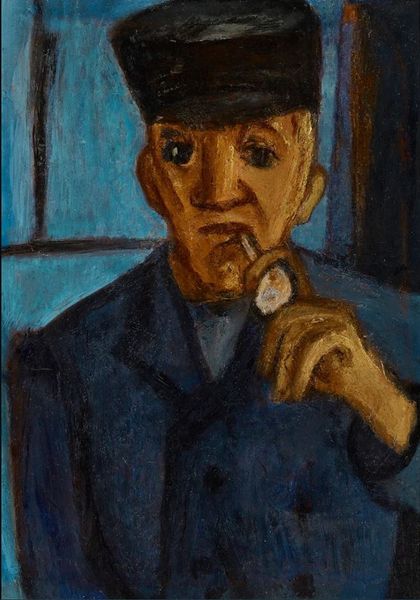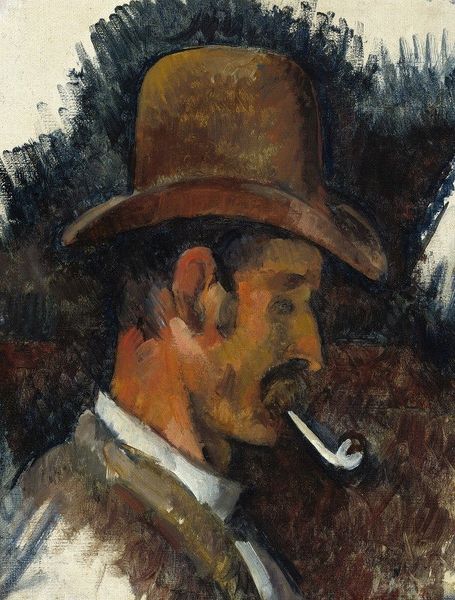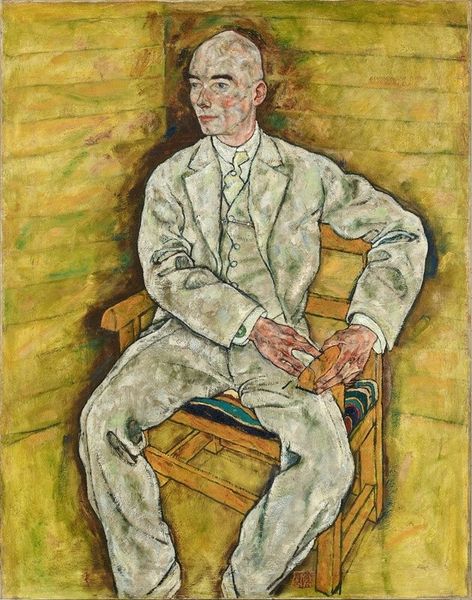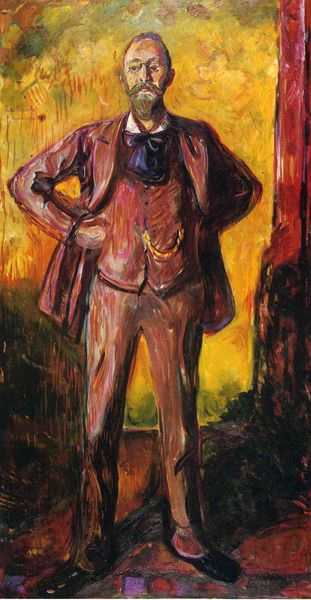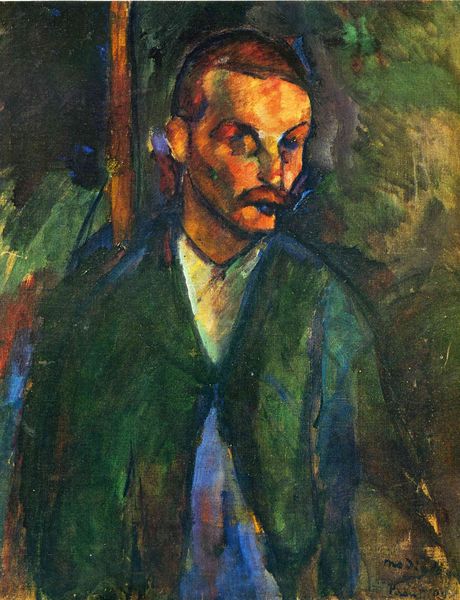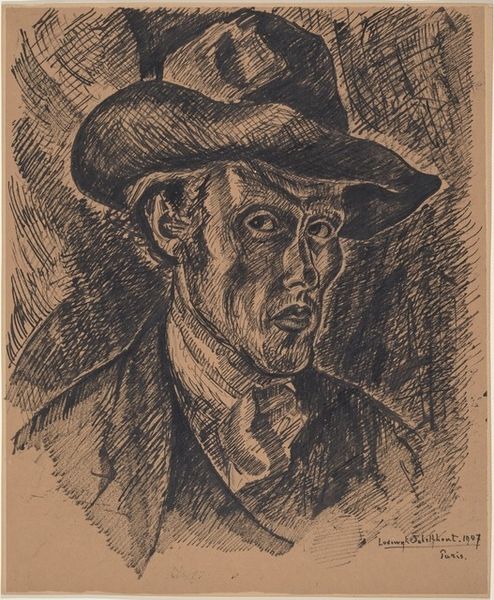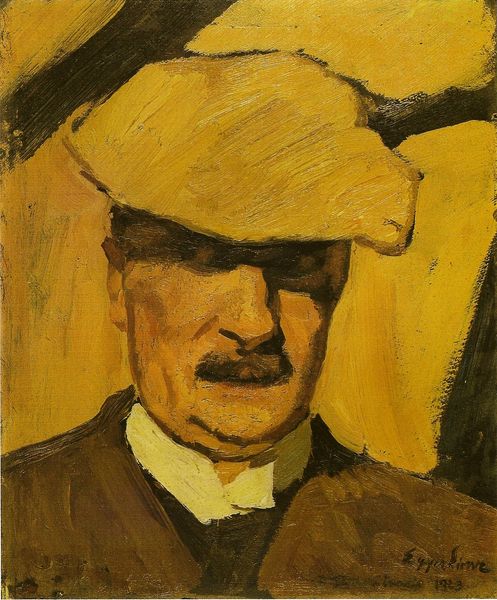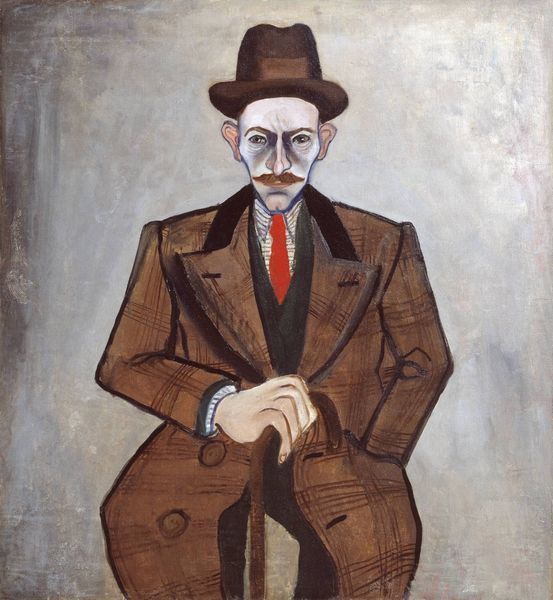
painting, oil-paint
#
portrait
#
self-portrait
#
painting
#
oil-paint
#
expressionism
Dimensions: 103 cm (height) x 69 cm (width) (Netto)
Editor: So, this is Axel Bentzen’s "Self-Portrait" from 1925. It's an oil painting currently housed at the SMK in Copenhagen. I’m really struck by the intensity of the gaze, and how the stark contrasts of light and shadow seem to almost dissect the face. How do you interpret this work, especially considering the context of Expressionism? Curator: That intensity is key. This work, situated within Expressionism, offers us a window into the artist's internal world during a period marked by immense social and political upheaval following the first World War. Expressionism, as a movement, sought to represent subjective experience rather than objective reality. Consider Bentzen's use of colour, which, while representational, leans towards a jarring contrast. What does that tell you about the emotional state he might be conveying? Editor: It suggests unease, maybe even anxiety? The green and blue of the suit, juxtaposed against the yellows and browns of the face and background… It’s unsettling. It challenges the conventional, almost like a disruption. Curator: Precisely. Now think about the gaze, which you mentioned. Is it confronting? Is it vulnerable? How might contemporary theories of identity and self-representation help us understand what Bentzen is trying to communicate about himself and, perhaps, about the male subject within that historical moment? Does this painting challenge traditional portraiture norms? Editor: I think it's both confronting and vulnerable. There's a challenge in meeting his eyes, but also a sense of rawness, as if he's exposing something deeply personal. And, yes, definitely, the lack of idealization is a direct challenge. Traditional portraits aimed to elevate the subject, while this seems to almost… deconstruct it. Curator: Exactly. And what implications does this hold when reflecting upon societal power dynamics? Bentzen challenges us to reconsider how identity is constructed and perceived, and to recognise the multifaceted nature of self-expression in times of turbulence. Editor: This has given me a lot to consider about the role of historical context and personal identity in understanding art. Thank you. Curator: Indeed. Reflecting on the historical undercurrents embedded in art invites us to perceive it as more than mere representation; it's a potent dialogue.
Comments
No comments
Be the first to comment and join the conversation on the ultimate creative platform.
